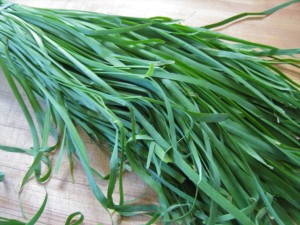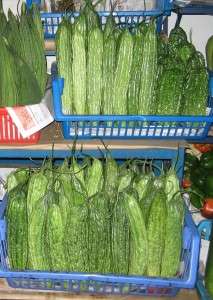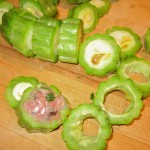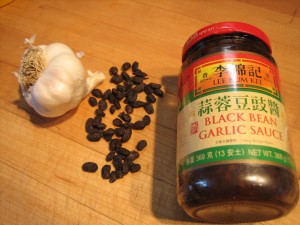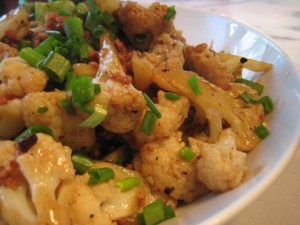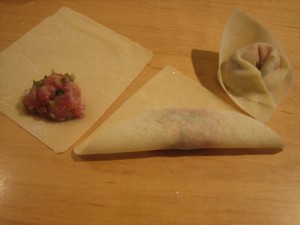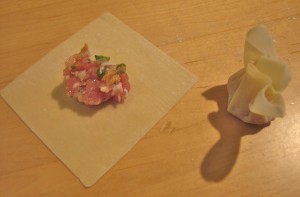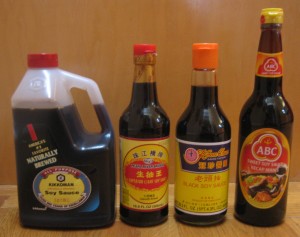I’ve been working my way through two pounds of garlic chives, also known as Chinese chives. I usually buy most of my produce at the farmers’ market, but sometimes they don’t have what I want. I needed about one cup thinly sliced garlic chives, probably four ounces would have been enough. So I went to the Asian supermarket 99 Ranch. The smallest package of garlic chives weighed in at two pounds. I was tempted to open the package and take out a small amount, but the package was taped shut and the package was already weighed and priced. Why do these big supermarkets package vegetables in such big quantities? Who wants 2 or 3 pounds of the same vegetable? If you own a restaurant or have a big family it might make sense, but I prefer to buy small quantities of several different kinds to eat throughout the week.
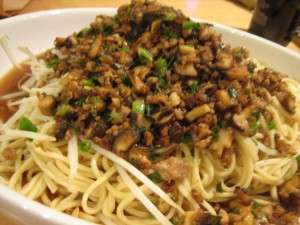 I bought the big package and made Noodles with Mushroom Pork Sauce (page 104), a wonderfully easy dish packed with flavor. It’s sort of like an Italian meat sauce with spaghetti, except this is Hakka style. Lots of stir-fried mushrooms, garlic chives, pork, and soy sauce make a dark savory sauce that spills over noodles and bean sprouts.
I bought the big package and made Noodles with Mushroom Pork Sauce (page 104), a wonderfully easy dish packed with flavor. It’s sort of like an Italian meat sauce with spaghetti, except this is Hakka style. Lots of stir-fried mushrooms, garlic chives, pork, and soy sauce make a dark savory sauce that spills over noodles and bean sprouts.
Now I have about 1 3/4 pounds of chives left. Luckily garlic chives are widely versatile. Use their pungent garlic-onion essence anywhere you use garlic and green onions which make a suitable substitute. The chives look much like grass with long green flat blades. Add them to stir-fried meats and vegetables, soups, dumpling fillings, and salads.
I have been making lots of Fried Eggs with Chives (page 80). This dish is so easy, it almost doesn’t need a recipe. It similar to an Italian fritatta, a golden fried egg pancake dense with chives. You can make them any size, but I like to use a small pan like one used for omelets, because the eggs are easier to turn over.
Fried Eggs with Chives: Lightly beat 2 large eggs with a little salt and spoonful of water. Set a 6- inch frying pan over high heat. When the pan is hot, add 1 tablespoon of oil, then 3/4 cup thinly sliced garlic chives. Cook just until chives are bright green and wilt, then stir the wilted chives into the beaten eggs. Return the pan to high heat, add 2 tablespoons more oil, then the egg mixture. As the egg sets up, lift up the cooked edges to let the raw egg flow underneath. When golden on bottom, turn the eggs over to brown the other side. Slide onto a plate and eat with a bowl of hot rice for a simple supper.
What are your favorite ways to use garlic chives?

